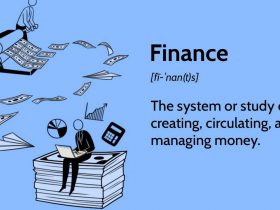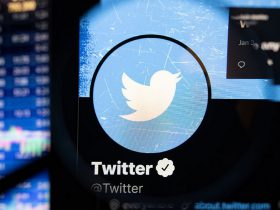With inflation at a 40-year high, most Americans have no choice but to consider some belt-tightening strategies to protect their savings and investments.
The consumer price index increased 1% in May, on a seasonally adjusted basis, according to the U.S. Bureau of Labor Statistics. Over the last 12 months, the CPI rose 8.6%, the largest 12-month increase since December 1981.
The increase was broad-based, with the indexes for shelter, gasoline and food being the largest contributors, BLS said in a statement. And that’s why it’s wise to seek out any ways to reduce the sting of higher prices.
IBD Newsletters
Get exclusive IBD analysis and actionable news daily.
IBD Newsletters
Get exclusive IBD analysis and actionable news daily.
Please enter a valid email address
Please select a newsletter
Get these newsletters delivered to your inbox & more info about our products & services. Privacy Policy & Terms of Use
Thank You!
You will now receive IBD Newsletters
Something Went Wrong!
Please contact customer service
Take Advantage Of Inflation Tax Breaks
Gas prices are skyrocketing so much, the IRS recently announced it is boosting deductible cost limits for the second half of 2022. This is a potential write off.
Taxpayers can use the optional standard mileage rates to calculate the deductible costs of operating an automobile for business and certain other purposes.
Starting July 1, the standard mileage rate for business travel will be 62.5 cents per mile, up 4 cents.?The rate for deductible medical or moving expenses (available for active-duty military) will also rise 4 cents to 22 cents.
The 14-cents-per-mile rate for charitable organizations remains unchanged.
The IRS normally updates the mileage rates once a year in the fall for the following calendar year. Midyear increases are rare; the last time the IRS made such an increase was in 2011.
“The IRS is adjusting the standard mileage rates to better reflect the recent increase in fuel prices,”?said IRS Commissioner Chuck Rettig in a statement. “We are aware a number of unusual factors have come into play involving fuel costs, and we are taking this special step to help taxpayers, businesses and others who use this rate.”
Ease Inflation Pain: Cut Gas Costs
The average price of a gallon of gasoline in the U.S. has jumped to $5 a gallon, according to a recent report by the American Automobile Association. Use public transit, if available. Walk or bike, whenever you can.
“Maybe you are within walking/biking distance to the grocery store, or the restaurant or downtown, or wherever you are going,” says Chris Chen, a certified financial planner in the Boston area. “Maybe you can give car pooling another shot.”
Additionally, if you’re not on a hybrid work schedule yet, where you can work from home some days, now’s the time to consider it, Chen added.
Finally, if you have a Costco (COST) membership, fill up at its gas stations. Its gas prices are among the lowest in the country. Alternately, use your grocery store customer loyalty points to discount fuel prices, if that’s an option.
Adjust Your Budget
Ocala, Fla.-based CFP Barbara O’Neill suggests you review your budget and look for items that can be trimmed or removed.
One key tip from a recent blog: Consider eating less of items that have risen sharply in price like beef, pork, poultry, eggs and cereal, and more items with modest price increases. (Always check with your doctor first when making dietary changes.)?
“Another option is to consider store brands of often overpriced items (if they are less costly) or to stock up on items during sales,” she added.
Ease Inflation Pain: Delay Purchases
Hold off on buying a car or pricey electronics like computers and TVs. Chip shortages have slowed production of these goods. Demand is outstripping supply. So prices have surged.
“Ditto for home improvements with highly inflated lumber, materials and labor costs,” O’Neill said. Home appliances are facing the same price hikes as cars due to chips and parts shortages.
Postpone Retirement
In retirement, you’ll be pulling from what you saved and invested. So if your investment account is down 20% because of the recent market slump, you’re pulling out money that can’t be made up down the road, said Ashley Folkes, a CFP at Bridgeworth Wealth Management in Birmingham, Ala.
“(Retirees) are going to get a cost-of-living adjustment from Social Security, but it’s not going to match 8.5% inflation,” he said.
Instead, consider delaying retirement for a couple of years, Folkes says. That way you avoid drawing from your savings and investments in a down market.
“That’s powerful,” Folkes said. “You can even work part-time, so you don’t draw down as quickly.”
In addition, Folkes advises waiting until you’re 70 to begin taking Social Security benefits, if you were born in 1960 or later.
“You will get somewhere around an 8% increase in benefits if you wait,” he said. “That could be impactful to you.”
Review Your Investment Portfolio
The Federal Reserve hiked interest rates by three-quarters of a basis point on June 15, the largest increase in three decades. It also signaled more increases before the year is over.
The aggressive rate hike may come as a shock to many, says Clark Kendall, CFA & CEO of Maryland-based Kendall Capital. But financial experts have been “smelling blood in the water” for some time now, he says.
One way to mitigate investment risk?
“Own companies, not just stocks,” Kendall said “The companies should boast products and services that are unique and well worth utilizing. They should maintain their ability to potentially increase prices as a response to rising costs.”
As interest rates go up, also focus on the valuations of the companies you own, Kendall says.
While remaining invested through turbulent times is often the best long-term strategy, O’Neill suggests looking over your investments and tweaking where necessary.
“Some investors seek out inflation-indexed investments such as Series I savings bonds and inflation-indexed bonds and bond mutual funds,” she wrote. “The best way to achieve positive, long-term, real (after inflation) returns is to build a diversified portfolio with different types of securities.”
Ease Inflation Pain: Finance Your Debt Carefully
Expect interest rates to keep rising, as the Federal Reserve attempts to cool inflation by tempering consumer borrowing.?Existing variable rate debt such as mortgages and credit-card debt will likely cost more, resulting in higher monthly payments, O’Neill cautions.
“Strategies to address this concern include refinancing to a fixed-rate loan and accelerating debt repayment,” she wrote.
Follow Adelia Cellini Linecker on Twitter @IBD_Adelia.














Leave a Reply